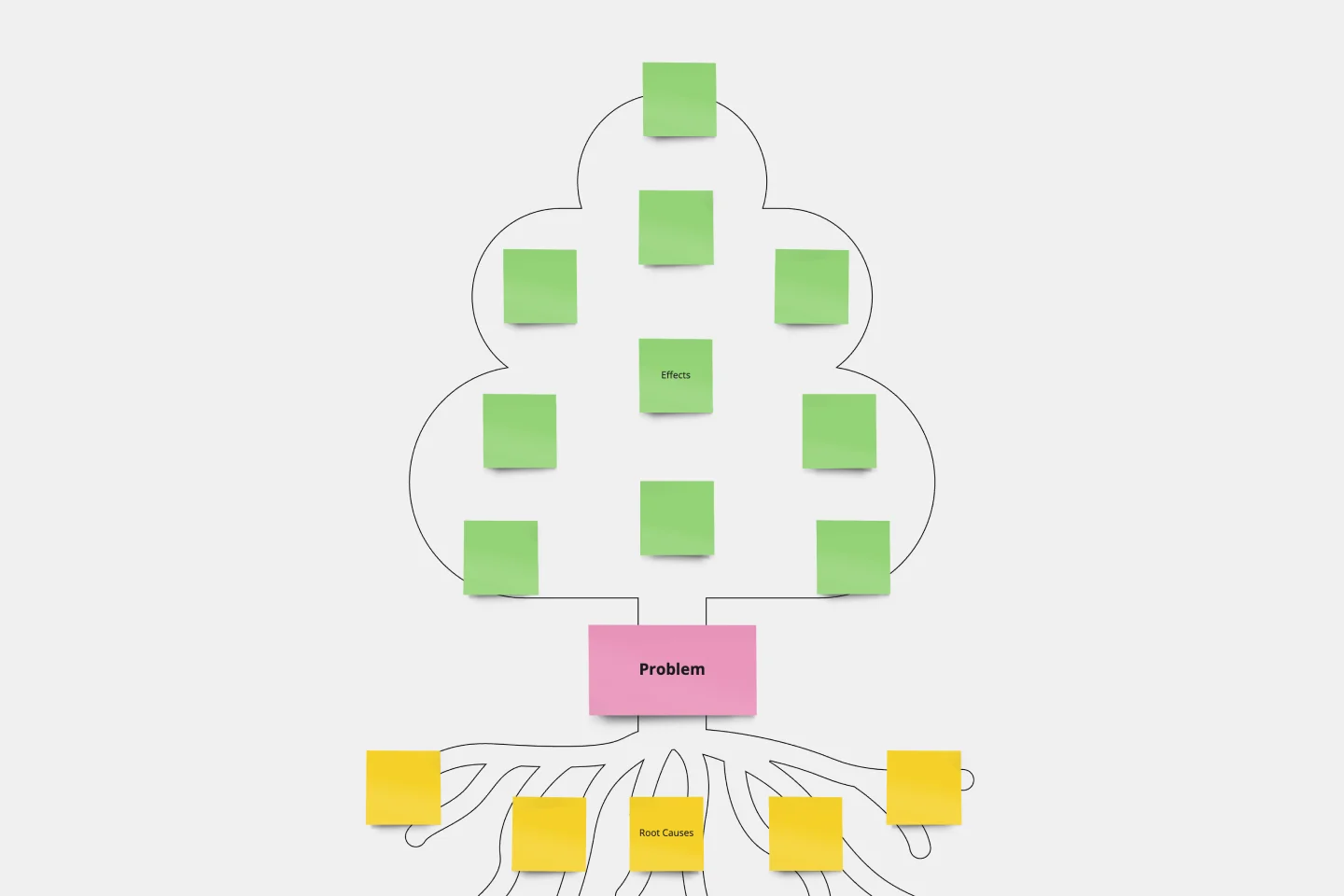This Root Cause Analysis template uses The Five Whys as a problem-solving technique. This approach allows you to uncover the underlying reasons behind complex issues, enabling effective solutions that address problems at their core. Below, learn about the concept of the Five Whys Root Cause Analysis including a step-by-step guide on how to leverage this template for optimal results.
Understanding the Five Whys Root Cause Analysis Template
The Five Whys methodology is a deceptively simple yet highly effective approach for uncovering the root causes of problems. Developed by Sakichi Toyoda, the founder of Toyota Industries, this technique involves asking the question "Why?" repeatedly, peeling away the layers of causation until the fundamental root cause is revealed. By diving deep into the issue, the Five Whys technique helps to avoid superficial fixes and facilitates the identification of long-lasting solutions.
Benefits of the Five Whys Template
Holistic problem resolution: This Five Whys template encourages thorough problem investigation, leading to holistic solutions that address the actual source of the issue, rather than just its symptoms.
Resource optimisation: By targeting the root cause, your resources can be directed toward solving the core problem, avoiding the wastage of temporary or inadequate solutions.
Prevention of recurrence: Addressing the root cause significantly reduces the chances of the problem resurfacing, which saves time and resources long term.
Enhanced team collaboration: The method fosters team collaboration by encouraging open discussions and brainstorming sessions, leading to a more comprehensive understanding of the issue.
How to implement the Five Whys Methodology
Here’s a step-by-step guide for using this template with your team:
Define the problem: Begin by clearly defining the problem you intend to analyse. Establish a precise description to ensure that everyone is on the same page.
Start asking "Why?": Pose the question, "Why did this problem occur?" to uncover the initial cause. Once you have an answer, ask "Why?" again in relation to that answer, and continue this process iteratively.
Repeat the process: Continue asking "Why?" to probe deeper with each subsequent answer. Aim to reach a point where you identify a root cause that, when addressed, will prevent the recurrence of the problem. Ideally this takes roughly five iterations, but can take more if needed.
Reflect and take action: Analyse the root cause you've identified and develop effective solutions based on your findings. Implement changes that directly address the fundamental issue.
Leveraging the Five Whys Root Cause Analysis Template
This template provides a structured framework that guides you through the process, ensuring that you ask the right questions, capture relevant answers, and document the conclusions accurately. By using a template, you enhance consistency across analyses and facilitate seamless sharing across your team and organisation.
Conclusion
This Five Whys Root Cause Analysis Template offers a helpful approach to understanding and resolving complex problems. By delving deep into the layers of causation, organisations can unearth the root causes of issues, leading to more effective and lasting solutions. Incorporating this technique into your problem-solving toolkit empowers you to address challenges at their core, prevent recurrence, and foster collaborative problem-solving within your teams. With the Five Whys methodology, you'll discover a newfound ability to dissect problems and uncover the key drivers that pave the way for successful resolutions.





